Inclusive Leadership: Embracing the 'I' in Inclusion
- Peggy Anderson
- Nov 15, 2024
- 4 min read
Updated: Dec 17, 2024
In today's interconnected world, the importance of inclusion in leadership can't be overstated. It's not just about inviting diverse individuals to the table but about ensuring that everyone's voice is heard and valued. The phrase, "Inclusion begins with ‘I,’" resonates deeply as it emphasizes the need for leaders to start this journey from within. By understanding ourselves, we position ourselves to appreciate the diverse perspectives that our teams offer.
The Power of Self-Awareness
The journey to inclusive leadership begins with self-awareness. This means understanding your beliefs, values, and how your life experiences shape your views. When leaders reflect on their own backgrounds, they can uncover biases, recognize their strengths, and identify areas for personal growth.
For example, a leader who acknowledges their initial discomfort with certain cultures can actively seek to understand those cultures through initiatives such as cultural training sessions. A study by the Center for Creative Leadership found that leaders with high self-awareness are 10 times more effective at engaging their teams.
By developing this self-awareness, leaders can communicate more effectively, ensuring that everyone feels valued and heard. Emotional intelligence stems from this self-understanding, helping leaders connect with their teams on a deeper level. For instance, if a leader recognizes they tend to react defensively to criticism, they can practice active listening skills to foster a more collaborative atmosphere.
Embracing Differences
Inclusive leadership centers on valuing the differences within a team. It’s essential not only to accept but actively celebrate these variations. For instance, consider a team brought together to solve a complex problem. Each member, with their unique backgrounds—whether cultural, educational, or professional—offers different insights. When leaders encourage dialogue among these diverse voices, they may uncover innovative solutions that could remain hidden in a less diverse environment.
According to research from McKinsey, teams with diverse members make better decisions up to 87% of the time. By fostering an environment where different perspectives are welcomed, leaders can inspire creativity and drive innovation.

Leading by Example
The behavior of leaders sets the tone for their teams. When leaders embody inclusive behaviors like active listening and valuing all team member contributions, they cultivate a culture that promotes inclusion at every level. Utilizing tools - such as Maxwell DISC will provide valuable insight into your own communication style and the style for others. With better communication, you can make better connections and embrace an inclusive environment.
For instance, if a leader regularly holds open forums for feedback, it not only boosts team morale but also enhances overall productivity. According to a Gallup report, companies with engaged employees are 21% more profitable. By leading through actions, leaders show that every input is significant and welcomed.
Creating an Inclusive Environment
Leaders play a vital role in forming an inclusive workplace. Beyond simple representation, it’s crucial to create a space where every individual feels they belong. Implementing policies aimed at promoting diversity during hiring and decision-making processes is essential.
Training sessions focusing on bias awareness can empower team members. For example, a company that incorporates diversity training noted a 25% improvement in team collaboration, indicating that understanding each other's differences can lead to better teamwork.
Engaging in Continuous Learning
Inclusive leadership is an ongoing journey of growth. Leaders should commit to continual learning about diversity and inclusion. This could involve attending workshops or reading books that provide fresh insights into inclusive practices.
Seeking feedback from peers about inclusivity can uncover blind spots and areas for improvement. A culture of learning from both successes and mistakes is vital. It was reported that teams that embraced feedback loops improved their performance by 15% over six months.
Building Trust Through Transparency
Trust is crucial in any inclusive environment. Leaders who are transparent about their decision-making build stronger relationships with their teams. Sharing the reasons behind decisions—especially difficult ones—can create an atmosphere of trust and respect.
Research indicates that teams with high trust levels are 2.5 times more likely to collaborate effectively. When team members believe their leaders are honest and accountable, they are more likely to engage openly and positively.
Celebrating Successes
Finally, recognizing and celebrating successes—both individual and team accomplishments—plays a key role in fostering an inclusive culture. Acknowledging diverse contributions boosts morale and reinforces the significance of every role.
Leaders can establish recognition programs that highlight the accomplishments of team members from varied backgrounds. For example, one company showcased different achievements monthly, resulting in a noticeable increase in team engagement and retention rates by 30% over a year.
Embracing Inclusion for a Better Future
Inclusion truly begins with “I.” By fostering self-awareness and recognizing our biases, we can move beyond the limitations that often accompany leadership roles. Embracing differences, leading by example, creating an inclusive environment, engaging in continuous learning, building trust, and celebrating achievements are foundational to inclusive leadership.
As we work towards creating spaces where everyone feels valued, we enhance our organizations' effectiveness and contribute to a broader culture of acceptance. Remember, inclusive leadership is about more than policies—it's a commitment to understanding ourselves and each other. Let’s actively embrace the 'I' in inclusion and take meaningful steps toward a more inclusive future today.
Contact me about helping you and your team understand their styles and how to creative an inclusive environment through the use of a DISC assessment along with training and coaching!



Comments